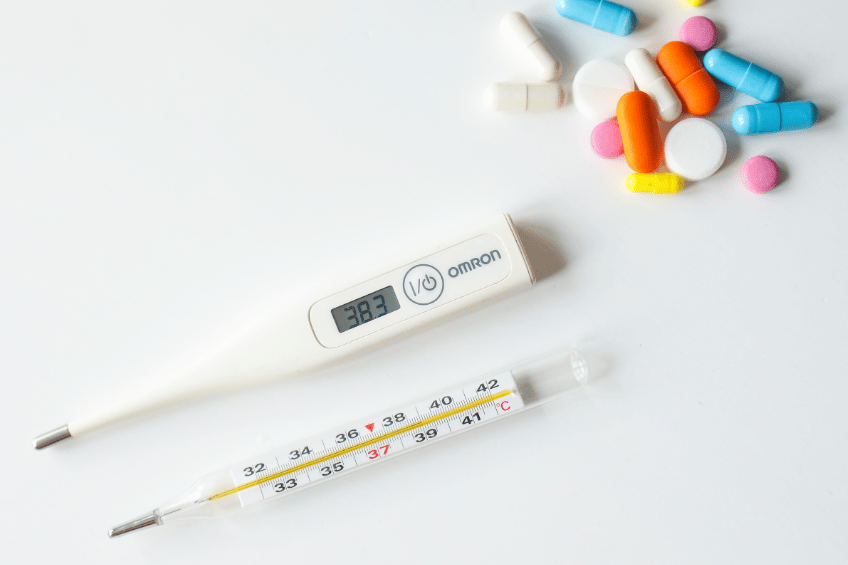Overview
Every body has a temperature. It’s always a range that depends on age, sex, health status and even time of day. The body is able to maintain a more or less constant internal temperature of between 96.8°F (36°C) and 98.96°F (37.2°C), even when the conditions are pretty extreme, like very hot or freezing weather.
Sometimes the temperature of the body might rise, creating a fever. What to do, when to worry, and when to seek medical advice?
What is a fever?
A fever is a natural defense mechanism of the human body. When the body temperature rises higher than 38 degrees, we start calling it a fever. The purpose of it is to help our immune system fight off possible pathogenic microorganisms. (viruses, bacteria, etc.)

Causes
Fever is commonly caused by infectious agents such as viruses, bacteria, protozoa or fungi that cause diseases such as the flu, meningitis, angina, gastroenteritis, measles, malaria, rubella, ebola, coronavirus…
Even though infections are the most common cause of fever, there may be other reasons, too:
- Sunstroke;
- Food poisoning;
- Immune system disorders;
- A reaction to certain medications: antibiotics, antiarrhythmics, amphetamines, atropine or chemotherapy;
- A reaction to a vaccine, for example diphtheria, tetanus, etc;
- Disorders of the area of the brain that controls the regulation of internal temperature;
- The consequences of a trauma or severe burn;
- A malignant tumor.
